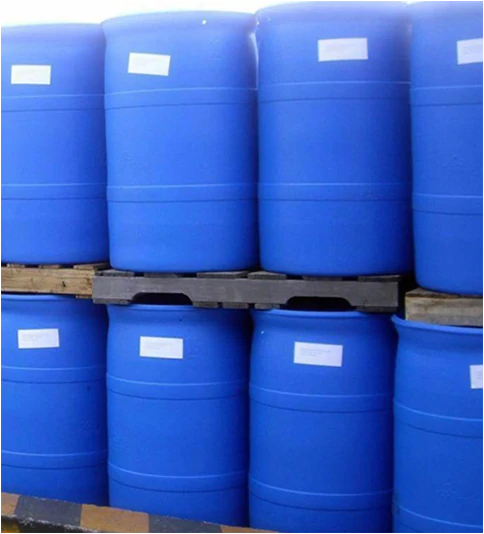
1 月 . 29, 2025 01:38 Back to list
physical properties of glacial acetic acid
Glacial acetic acid is a pivotal organic compound utilized in various industrial applications. Understanding its physical properties is essential for industries that rely on its use, such as pharmaceuticals, textiles, and plastics manufacturing. This article delves into the distinct physical characteristics of glacial acetic acid, shedding light on its suitability for various applications and ensuring safe handling practices.
In terms of viscosity, glacial acetic acid is less viscous than many other acids, with a viscosity of about 1.22 mPa·s at 25°C, slightly thicker than water. This property enhances its flowability through pipelines and apparatuses, making it manageable in both manual and automated systems for various industrial processes. It is crucial when designing systems to handle glacial acetic acid to consider its viscosity to ensure efficiency and safety. Regarding its refractive index, glacial acetic acid measures 1.371 at 20°C. This property, while more relevant in optical applications, also assists in quality control. By measuring the refractive index, industries can verify the purity of the acetic acid they are working with, ensuring that it meets required specifications for sensitive production processes such as pharmaceuticals manufacturing. Safety in handling glacial acetic acid cannot be overemphasized. Given its corrosiveness, appropriate measures must be in place to protect handlers from exposure. It can cause burns and respiratory issues if proper precautions are not taken. Industries should equip facilities with materials resistant to corrosion and train personnel in safety protocols. The specific odor of acetic acid can be detected even at low concentrations, acting as a natural alert to its presence in the environment. However, odor alone should never be relied upon for safety; proper ventilation and the use of PPE are mandatory. In summary, the physical properties of glacial acetic acid—purity, melting and boiling points, density, solubility, viscosity, and refractive index—play a critical role in its broad industrial applicability. Matching these properties with the intended application ensures optimal and safe usage. As industries continue to innovate, the demand for precise understanding of glacial acetic acid's physical properties remains a constant. By prioritizing safety and purity, industries can effectively utilize this compound's capabilities, driving forward advancements in technology and production.


In terms of viscosity, glacial acetic acid is less viscous than many other acids, with a viscosity of about 1.22 mPa·s at 25°C, slightly thicker than water. This property enhances its flowability through pipelines and apparatuses, making it manageable in both manual and automated systems for various industrial processes. It is crucial when designing systems to handle glacial acetic acid to consider its viscosity to ensure efficiency and safety. Regarding its refractive index, glacial acetic acid measures 1.371 at 20°C. This property, while more relevant in optical applications, also assists in quality control. By measuring the refractive index, industries can verify the purity of the acetic acid they are working with, ensuring that it meets required specifications for sensitive production processes such as pharmaceuticals manufacturing. Safety in handling glacial acetic acid cannot be overemphasized. Given its corrosiveness, appropriate measures must be in place to protect handlers from exposure. It can cause burns and respiratory issues if proper precautions are not taken. Industries should equip facilities with materials resistant to corrosion and train personnel in safety protocols. The specific odor of acetic acid can be detected even at low concentrations, acting as a natural alert to its presence in the environment. However, odor alone should never be relied upon for safety; proper ventilation and the use of PPE are mandatory. In summary, the physical properties of glacial acetic acid—purity, melting and boiling points, density, solubility, viscosity, and refractive index—play a critical role in its broad industrial applicability. Matching these properties with the intended application ensures optimal and safe usage. As industries continue to innovate, the demand for precise understanding of glacial acetic acid's physical properties remains a constant. By prioritizing safety and purity, industries can effectively utilize this compound's capabilities, driving forward advancements in technology and production.
